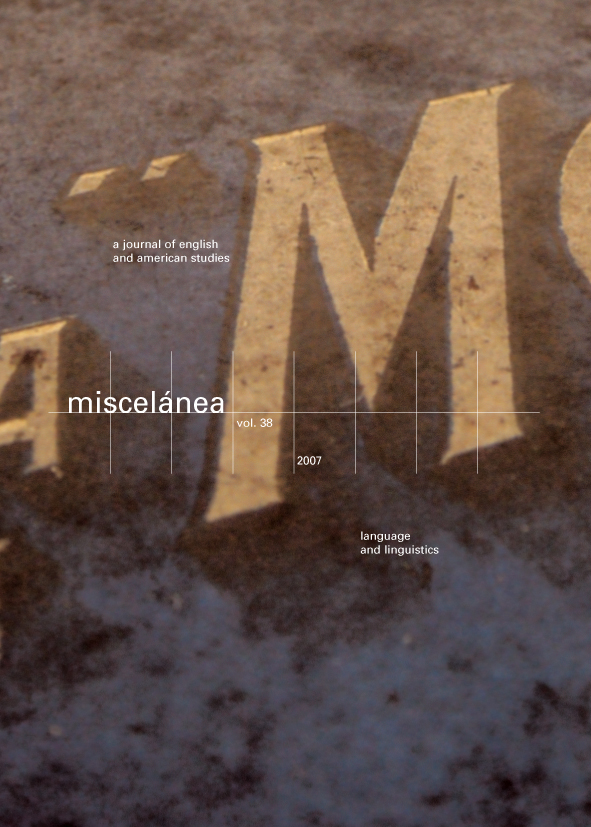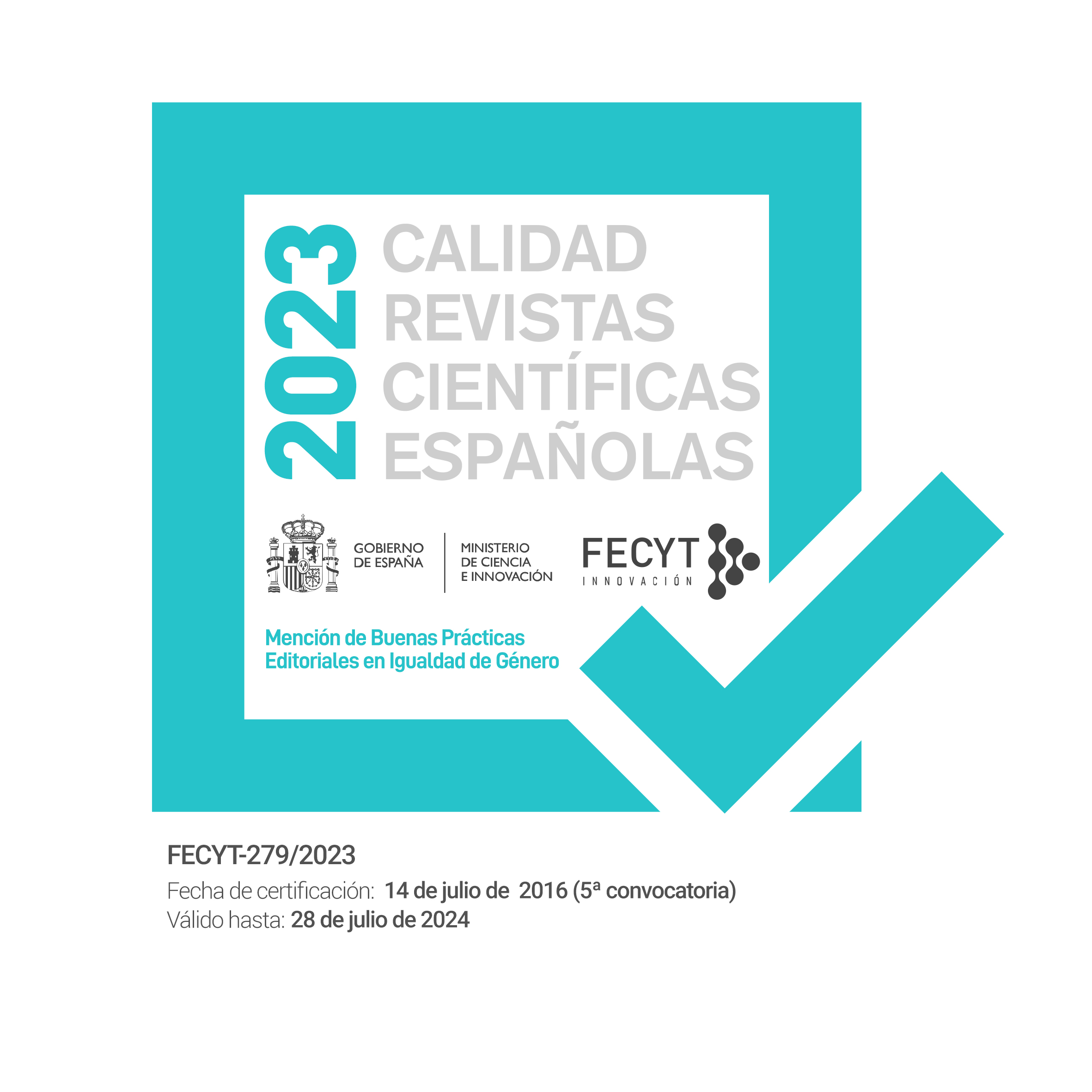'Finding another Face inside my Face’: The Semiotics of Mime in Edgar Nkosi White's Racialized Dramaturgies”
DOI:
https://doi.org/10.26754/ojs_misc/mj.20089721Keywords:
Theatre semiotics, Afro-Caribbean theatre, African American theatre, Racism, Edgar Nkosi WhiteAbstract
According to Tadeusz Kowzan, facial mime may be regarded as the system of kinetic signs that is closest to verbal expression. At the same time, as Kowzan contends, mime constitutes —together with gesture— the most personal and individualized expressive mode in the theatre, submitted as it is to the performer’s physical, psychological and actoral idiosyncrasies. In the dramatic production of the Afro-Caribbean playwright Edgar Nkosi White, mimic expression plays a prominent role: indeed, a broad variety of facial inscriptions informs both the dialogues and stage directions of his plays. Even if the mimic signs devised by the author have differentiated functions and do not exist in isolation, complementing as they do other verbal and non-verbal signs, most of them expose the inner and external tensions underlying situations of racial oppression. Considering the double axis of eye- and mouth-expression that determines facial gesturality, this essay intends to analyze the mimic expressivity of Edgar Nkosi White’s characters and its specific contribution to the author’s theatricalization of the phenomenon of racialism. At a more general level, the mimic designs inscribed in Edgar Nkosi White’s plays will be shown to unveil the discourse of ambivalence that tinges the racialized body when this is portrayed and represented from the victim’s point of view.
Downloads
References
Primary sources:
WHITE, Edgar Nkosi. 1970a. Fun in Lethe. Underground: Four Plays. New York NY: William and Morrow: 57-119.
—. 1970b. The Mummer’s Play. Underground: Four Plays. New York NY: William and Morrow: 121-169.
—. 1970c. The Wonderful Yeare. Underground: Four Plays. New York NY: William and Morrow: 171-245.
—. 1971. Segismundo’s Tricycle. Black Review 1: 130-154.
—. 1972. Dija. Scripts, 10 1: 15-17.
—. 1973a. The Crucificado. The Crucificado: Two Plays. New York NY: William and Morrow: 67-146.
—. 1973b. The Life and Times of J. Walter Smintheus. The Crucificado: Two Plays. New
York NY: William and Morrow: 1-65.
—. 1983a. The Case of Dr. Kola. The Long and Cheerful Road to Slavery: Man and Soul, The Case of Dr. Kola, That Generation. Lament for Rastafari and Other Plays. London: Marion Boyars: 155-172.
—. 1983b. That Generation. The Long and Cheerful Road to Slavery: Man and Soul, The
Case of Dr. Kola, That Generation. Lament for Rastafari and Other Plays. London: Marion Boyars: 173-207.
—. 1983c. Lament for Rastafari. Lament for Rastafari and Other Plays. London: Marion Boyars: 7-79.
—. 1983d. Like Them That Dream. Lament for Rastafari and Other Plays. London: Marion Boyars: 81-131.
—. 1984a. The Nine Night. The Nine Night and Ritual by Water. London: Methuen: 5-36.
—. 1984b. Ritual by Water. The Nine Night. The Nine Night and Ritual by Water. London: Methuen: 37-70.
—. 1985a. The Boot Dance. Redemption Song and Other Plays. London: Marion Boyars: 85-143.
—. 1985b. Les Femmes Noires. Redemption Song and Other Plays. London: Marion Boyars: 145-192.
—. 1985c. Redemption Song. Redemption Song and Other Plays. London: Marion Boyars: 11-84.
—. 1989. I, Marcus Garvey. Black Heroes: Seven Plays. Hill, Errol. (ed.). New York NY: Applause Theatre: 205-274.
—. 2001. The Lovesong for Langston. Ms. New Dramatists, New York.
—. 2002. Millennium 7. New Dramatists: Best Plays by the Graduating Class of 2001. London, Todd. (ed.). Hanover NH: Smith and Kraus: 267-307.
Secondary sources:
BAKHTIN, Mikhail. (1968) 1984. Rabelais and His World. Trans. H. Iswolsky. Bloomington IN: Indiana U.P.
BANHAM, M., et al. 1994. The Cambridge Guide to African and Caribbean Theatre. Cambridge: Cambridge U.P.
BHABHA, Homi. 1994. The Location of Culture. London: Routledge.
DAVIS, Thadious M., Trudier Harris. (eds.). 1985. Dictionary of Literary Biography. Volume 38. Afro-American Writers After 1955: Dramatists and Prose Writers. Ann Arbor: Gale Research Company.
FABRE, Geneviève. 1983. Drumbeats, Masks, and Metaphor. Contemporary Afro-American Theatre. Trans. M. Dixon. Harvard MA: Cambridge U.P.
FANON, Frantz. (1952) 1986. Black Skins, White Masks. Trans. C. L. Markman. London: Pluto Press.
HONZL, Jindrˇich. 1976. “Dynamics of the Sign in the Theater”. In Matejka, Ladislav and Irwin R. Titunik. (eds.). Semiotics of Art. Cambridge MA: The Massachusetts Institute of Technology Press: 74-93.
KOWZAN, Tadeusz. (1970) 1992. Literatura y espectáculo. Trans. M. García Martínez. Madrid: Taurus.
KRASNER, David. 1997. Resistance, Parody, and Double Consciousness in African-American Theatre, 1895-1910. Houndmills: Macmillan.
MELROSE, Susan. 1994. A Semiotics of the Dramatic Text. London: Macmillan.
PAVIS, Patrice. 1998. Diccionario del teatro. Trans. J. Melendres. Barcelona: Paidós.
STONE, Judy S. 1994. Theatre. Studies in West Indian Literature. London: Macmillan.
UBERSFELD, Anne. (1981) 1997. La escuela del espectador. Trans. S. Ramos. Madrid: Publicaciones de la Asociación de Directores de Escena de España.
UGWU, Catherine. (ed.). 1995. Let’s Get It On: The Politics of Black Performance. London: Institute of Contemporary Arts.
Downloads
Published
How to Cite
Issue
Section
License
Copyright (c) 2008 Núria Casado Gual

This work is licensed under a Creative Commons Attribution-NonCommercial 4.0 International License.


